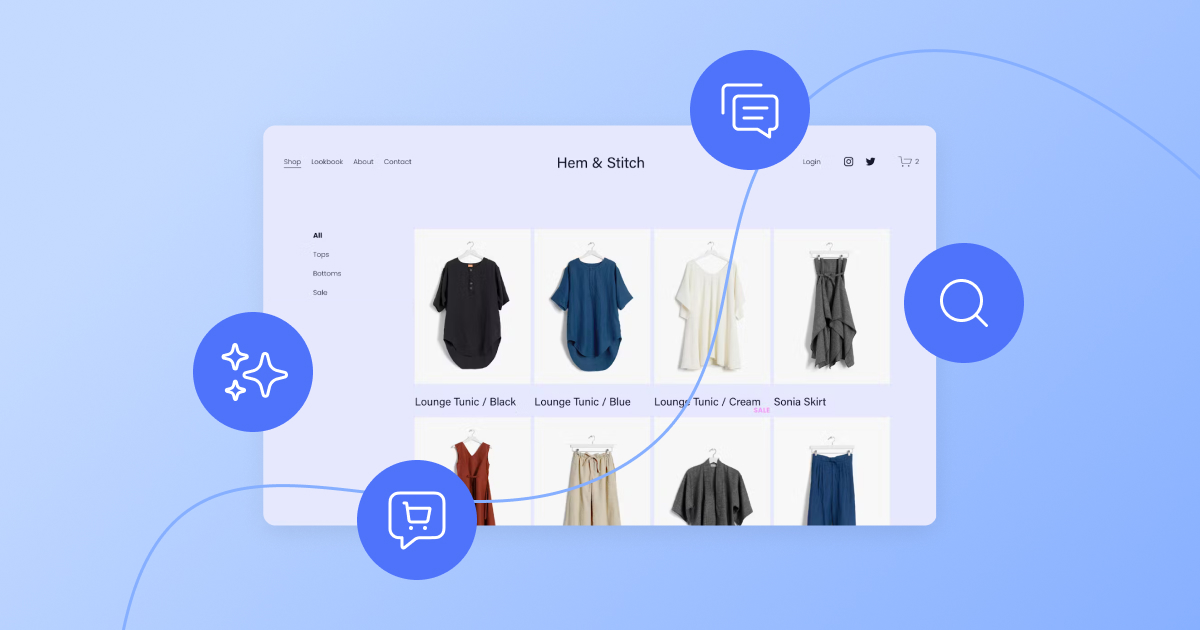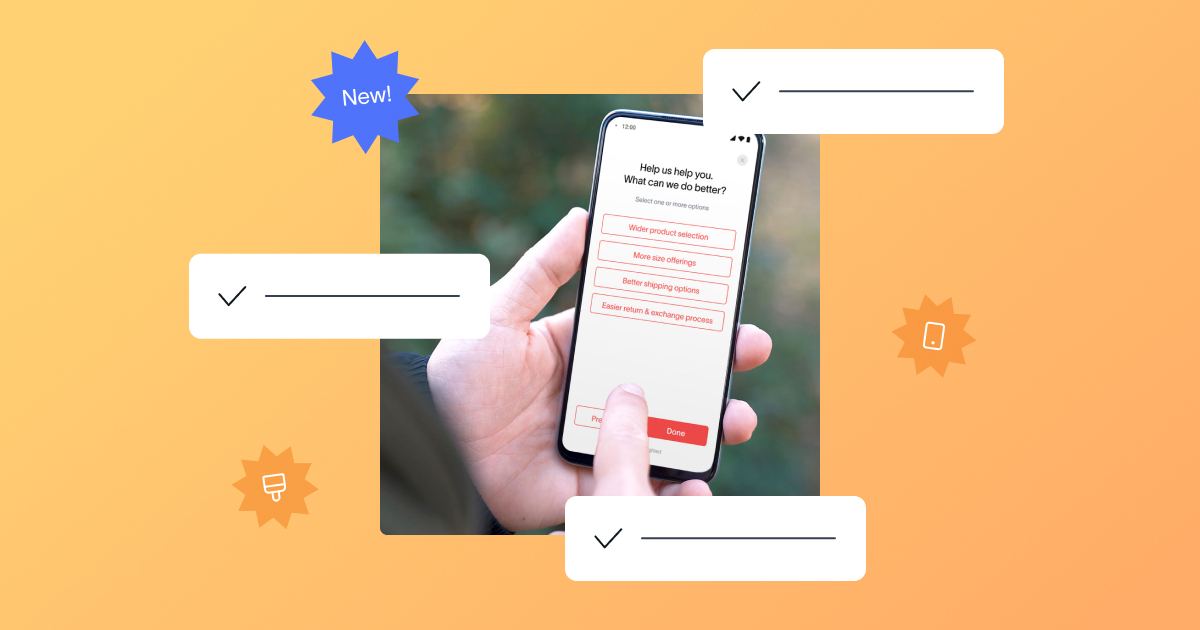This post is a contribution by Ganesh Mukundan, Content Marketer at Hiver
Does the future look bleak for brick and mortar stores?
2020 sure made it seem that way. The COVID-19 outbreak showed no mercy. Along with alarming health concerns worldwide, it had most retail businesses running for cover, with some of them having to bear the brunt of overnight closures.
For many others, their in-store footfall started to plummet and what followed was a desperate attempt to adapt and survive in the new normal. As the curtains came down on thousands of physical stores, customers took to the more convenient and safer alternative of shopping online.
We saw many brick-and-mortar stores pumping in resources to their existing ecommerce channels. Some of them even pivoted to go online for the very first time. It’s no wonder then that the online share of retail sales is expected to touch a record-breaking 21.8% by 2024, indicating a drastic shift in customer preferences courtesy of COVID-19.
But with global lockdowns in play, one of the things that ‘home-confined customers’ craved for is in-person (real-world) experiences. Going by recent survey which took place in the UK nine months into social distancing – one in four of UK adults were reportedly experiencing feelings of loneliness and were waiting to get back to their daily routines.
Today, with retail stores marching down the road to recovery, the pent-up demand for in-store experiences is making customers head back into the store – resulting in a 43.2% spike in the customer count across stores in the US. We’re slowly starting to see an uptick in restaurant reservations too – with reports by UK’s Office for National Statistics stating that there has been a 32% increase in seated diners compared to the same period in 2019.
The in-person shopping experience is making a comeback like never before
It’s safe to say that no business was immune to the ramifications and the digital acceleration brought on by the pandemic.
That said, people are now eager to get back to one of their favorite pastimes – in-store shopping.
With physical storefronts in the UK reopening, the BRC-KPMG Retail Sales Monitor reported that total retail sales were 17% higher in June 2021, on a like-for-like basis from June 2019.
Things are certainly starting to look up for physical store retailers. Nonetheless, there is also a need to reinvent the retail customer experience with a renewed focus on health and safety – which every in-person interaction demands today.
As the in-store customer experience is being redefined, it’s important to understand that there has been a massive disruption in the way we shop, especially for FMCG goods.
While the in-home consumption of perishables has been on the rise, another pandemic-infused trend is that customers are finding new stores to shop at. Globally, there was a considerable spike in customers shopping at stores that they have never shopped at before. The numbers climbed up from 39% in May 2020 to 45% in September 2020.
How can retailers offer an in-store experience that is welcoming and safe?
Retailers that are looking to weather the storm and increase walk-ins to their stores must realize the need to up their game and transform the in-store experience altogether. Retailers need to be quick to evaluate and reimagine their strategies to offer customers an inimitable shopping experience.
From implementing strict safety norms and social distancing programs to stock quarantining and hand sanitizing stations, retailers cannot afford to overlook fundamental COVID-19 preventive measures. It’s also imperative for retailers to tap into the omnichannel opportunity and give customers a perfect blend of offline and digital channels for their entire customer experience.
With a need to dial-up the digital presence, retailers are now taking the in-store experience online. Live streaming and virtual appointments are just some of the ways of reimagining in-person interactions for customers who may be hesitant to venture back into physical stores.
6 noteworthy examples of in-store customer experiences in a post-pandemic world
As the pandemic is rewriting the rules of retail, we’ve been treated to innovative in-store customer experiences that are fitting for a post-pandemic world.
Here’s a quick rundown of our top picks:
1. The rise and rise of BOPIS
The Buy Online, Pickup In-Store (BOPIS) trend has been quite a hit. In today’s fast-paced world, customers are looking at ways to leverage technology to expedite the shopping experience.
BOPIS offers just that – with the ‘click and collect’ option, customers can shop online and then head to the store to pick up their purchase. As per Insider Intelligence, in 2020, US shoppers spent a whopping $72.46 billion via ‘click and collect’.
In addition to ensuring that safety and security measures are in place, BOPIS also allows retailers to pace up and adapt to the customers’ busy lifestyles.
Lowe’s, the home improvement chain of retail stores, had introduced BOPIS back in 2019. Today, they are taking convenience to the next level by deploying pickup lockers at their stores in the US — removing the need for customers to wait in line or reach out to store associates for assistance. Customers are allowed to collect same-day orders by using a barcode that they receive via an automated email.
Lowe’s is enabling customers to get in and out of the store, faster than ever before thereby streamlining the in-store experience for a post-COVID world.
2. Say hello to built-in drive-thrus and digital menus
Eating out in a restaurant may not feel the same anymore. The restaurants had it tough with health and safety laws cracking down on them.
Fearing closure, many restaurants are pivoting to offer curbside pick-up and home delivery. Diners, on the other hand, are stepping in with disposable silverware, single-use or digital menus, and QR codes to enable no-touch ordering.
Among restaurants that have moved to the cash-free space is Chick-fil-A. With customers demanding hygienic, touch-free payment alternatives, the restaurant takes things up a notch by allowing customers to make in-app payments for their orders.
Another example from the restaurant space that’s worth a mention is Taco Bell’s revamped drive-thrus. Customers are increasingly shifting to ordering food online – and Taco Bell is meeting their demand with two newly designed drive-thru lanes. Customers who placed orders via their mobile app can now pick up their nachos and burritos a lot faster with a dedicated lane for picking up mobile orders. That’s not all, Taco Bell is also ramping up the customer experience with high-tech kitchens and pickup shelves for their curbside pickup.
3. Autonomous stores take over
With customers heading back to grocery stores to shop for their daily essentials, autonomous stores like the Amazon Go model are making a mark.
Over 75% of customers prefer an autonomous shopping experience, citing health concerns and the need for extreme convenience.
Amazon’s ‘cashier-free, just-walk-out’ experience where customers are not required to touch anything besides the items that they are purchasing – is starting to see many takers despite their slow roll-out.
Retailers today are looking to quickly adapt and implement autonomous store technologies in a bid to allow customers to skip checkout lines and give them the touch-free experience that they desire.
4. The power of virtual retailing
Retailers are leaving nothing to chance in their race to keep up with digital-savvy customers. Virtual retailing is helping them tap into new revenue streams and also attract health-conscious shoppers by meeting their safety demands.
From just a nice-to-have feature, the virtual shopping experience has gone mainstream.
Ralph Lauren joined forces with Snapchat to give a new meaning to virtual connections. Together they have created virtual versions of real-life Ralph Lauren outfits for Snapchat Avatars, called Bitmojis.
With these virtual connections, Ralph Lauren is pushing beyond physical restrictions to build immersive and personalized brand interactions with customers. Using Bitmojis, Ralph Lauren enables customers to virtually ‘try on’ the clothes and make the purchase within the app. Allowing shoppers to try on collections virtually, comes as a relief for many – especially with growing health concerns of visiting the store and waiting in lines to use the fitting room.
5. Grocery stores bank on new delivery mechanisms
With an increasing demand for perishables and convenience items, grocery stores are turning to the likes of food delivery companies like DoorDash.
DoorDash launched DashMart to help customers order household essentials and ready-made meals from the comfort of their homes – removing the need to make those quick trips to the store.
As more convenience stores take on the digital route, DoorDash offers customers a wide selection of daily essentials and even promises express delivery, faster than what their local grocery stores can offer.
6. Co-working brewery, anyone?
As breweries started losing out on sales, most of them had to close their doors for the last time. But not Optimism Brewing. They found a new way to attract customers by turning the brewery into a co-working space.
Customers seemed to love the idea of working from their favorite brewery. Optimism Brewing allows customers to even reserve a desk in their outdoor space, giving them the much-deserved break from the mundane work-from-home routine.
Gear up for an innovative in-store customer experience
The pandemic has forever changed customer behavior.
To keep customers coming back for more – brick-and-mortar store retailers will have to take on a more agile operating model, one that redefines the physical layout of the stores.
Retail spaces with built-in distancing and strategic product placements are essential to offer the grab-and-go shopping experience that today’s customers will enjoy.
About Ganesh Mukundan
Ganesh Mukundan is a content marketer at Hiver who loves everything customer experience and customer service. Ganesh is passionate about narrating delightful customer stories, researching CX trends, and diving into concepts such as VoC and Customer Journey Mapping. When he’s not working, Ganesh likes to rap, play football, and binge-watch Nordic TV shows.







